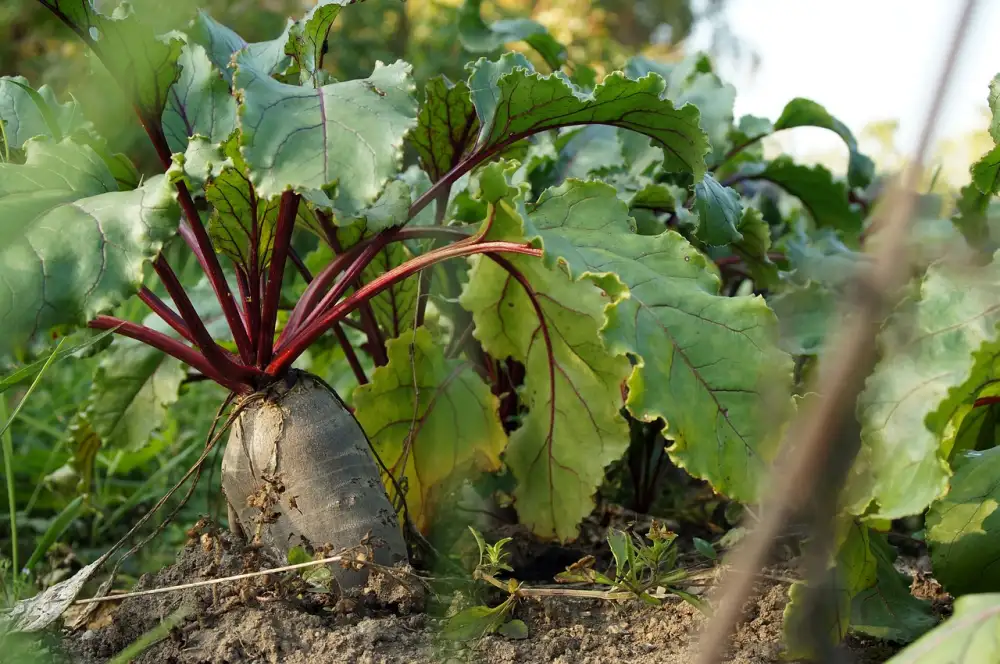Harvard Beets: Unveiling the Sweet and Sour Delights of this Classic Recipe

- The History of Harvard Beets: A Traditional American Dish
- Ingredients Needed for Harvard Beets: Exploring the Key Components
- Step-by-Step Instructions: How to Prepare Harvard Beets
- Tips and Tricks for Perfect Harvard Beets: Enhancing Flavor and Texture
- Serving Suggestions: Pairing Harvard Beets with Complementary Dishes
- Variations and Substitutions: Customizing the Harvard Beet Recipe
- Health Benefits of Beets: Why Harvard Beets are Nutritious and Delicious
- Frequently Asked Questions: Addressing Common Queries about Harvard Beets
Harvard Beets are a classic sweet and sour beet recipe that has been enjoyed for generations. This delightful dish combines the earthy sweetness of beets with a tangy, vinegar-based sauce to create a unique flavor profile that is both refreshing and satisfying. Whether you're a beet lover or new to this vibrant vegetable, Harvard Beets are sure to impress with their balance of flavors and beautiful presentation. Get ready to embark on a culinary adventure as we unveil the secrets behind this timeless recipe.
The History of Harvard Beets: A Traditional American Dish
Harvard beets have a rich history as a traditional American dish. The origins of this recipe can be traced back to the early 19th century when beets were first introduced to the United States. It is believed that Harvard University played a role in popularizing this sweet and sour beet dish, hence its name.
The combination of sweet and tangy flavors in Harvard beets became a favorite among Americans, especially during the Victorian era. The dish gained popularity for its vibrant color, unique taste, and versatility in pairing with various main courses.
Over time, Harvard beets have become a beloved classic that has been passed down through generations. Today, it continues to hold its place as a staple side dish in many American households and is often served at holiday gatherings and special occasions.
The history of Harvard beets showcases how food traditions evolve and endure, connecting us to our culinary heritage while delighting our taste buds with their timeless appeal.
Ingredients Needed for Harvard Beets: Exploring the Key Components
To prepare Harvard Beets, you will need the following key ingredients:
- Beets: Choose fresh, firm beets with vibrant color. Opt for medium-sized beets that are easier to work with.
- Vinegar: The sour element in this recipe comes from vinegar. Traditionally, white vinegar is used, but you can experiment with apple cider or red wine vinegar for added depth of flavor.
- Sugar: To balance the tartness of the vinegar, granulated sugar is added. Adjust the amount according to your preference for sweetness.
- Butter: A small amount of butter adds richness and helps to round out the flavors of the dish.
- Cornstarch: This thickening agent is used to create a glossy sauce that coats the beets.
- Salt and pepper: These basic seasonings enhance the overall taste of the dish.
By combining these simple yet essential ingredients, you can create a harmonious balance of sweet and sour flavors in your Harvard Beets recipe.
Step-by-Step Instructions: How to Prepare Harvard Beets
To prepare Harvard Beets, start by washing and peeling 4 medium-sized beets. Cut them into thin slices or cubes. In a saucepan, combine 1 cup of water, 1/2 cup of sugar, 1/2 cup of vinegar, and a pinch of salt. Bring the mixture to a boil over medium heat. Add the sliced beets to the saucepan and reduce the heat to low. Cover and simmer for about 20 minutes or until the beets are tender. In a separate bowl, mix 2 tablespoons of cornstarch with 2 tablespoons of cold water until smooth. Gradually add this mixture to the saucepan while stirring constantly. Cook for an additional 5 minutes or until the sauce has thickened. Serve hot or cold as desired.
Tips and Tricks for Perfect Harvard Beets: Enhancing Flavor and Texture
To enhance the flavor and texture of your Harvard Beets, here are some tips and tricks to keep in mind. First, make sure to cook the beets until they are tender but still firm to maintain their natural sweetness. Secondly, adding a splash of vinegar or lemon juice during the cooking process will help balance out the sweetness with a tangy note. Lastly, don't forget to season with salt and pepper to taste, as it will bring out the flavors even more. These simple techniques will ensure that your Harvard Beets are perfectly balanced and delicious.
Serving Suggestions: Pairing Harvard Beets with Complementary Dishes
When it comes to serving Harvard Beets, there are a variety of dishes that pair perfectly with this sweet and tangy delight. One classic combination is serving Harvard Beets alongside roasted chicken or turkey. The earthy flavors of the beets complement the savory meat, creating a well-balanced and satisfying meal. Another great option is to serve Harvard Beets as a side dish with grilled steak or pork chops. The sweetness of the beets adds a delightful contrast to the rich and smoky flavors of the meat. For a vegetarian option, try pairing Harvard Beets with creamy goat cheese or feta crumbles. The creamy and tangy cheese balances out the sweetness of the beets, creating a delicious flavor combination. Finally, for a light and refreshing option, serve Harvard Beets on top of a bed of mixed greens with a drizzle of balsamic vinaigrette. The crispness of the greens complements the tender beets, while the vinaigrette adds a tangy kick. No matter how you choose to serve them, Harvard Beets are sure to add a burst of flavor to any meal.
Variations and Substitutions: Customizing the Harvard Beet Recipe
While the classic recipe for Harvard Beets is delicious on its own, there are several variations and substitutions you can make to customize this dish to your taste. Here are a few ideas:
- Spice it up: Add a pinch of cayenne pepper or red pepper flakes for some heat. This will give your Harvard Beets a spicy kick that pairs well with the sweet and sour flavors.
- Citrus twist: For a refreshing twist, substitute orange juice for the vinegar in the recipe. The citrusy flavor adds brightness to the dish and complements the earthiness of beets.
- Herb-infused: Experiment with different herbs to enhance the flavors of your Harvard Beets. Try adding fresh dill, thyme, or rosemary during cooking for an aromatic touch.
- Maple syrup sweetness: Replace some or all of the sugar with maple syrup for a more natural sweetness. This substitution adds depth and richness to the dish.
- Balsamic brilliance: Swap out the vinegar with balsamic vinegar for a tangier and slightly sweeter flavor profile. The dark, syrupy consistency of balsamic vinegar complements beets beautifully.
Remember, these variations are just starting points – feel free to get creative and make adjustments based on your personal preferences. Customizing your Harvard Beets will make them even more enjoyable for you and your guests!
Health Benefits of Beets: Why Harvard Beets are Nutritious and Delicious
Harvard beets not only tantalize your taste buds, but they also offer a plethora of health benefits. Beets are rich in essential nutrients like fiber, folate, potassium, and vitamin C. They are low in calories and fat while being high in antioxidants, which help fight inflammation and boost your immune system. The natural sweetness of beets makes Harvard beets a healthy alternative to sugary desserts. Incorporating this dish into your diet can support heart health, improve digestion, and promote healthy skin. So indulge in the deliciousness of Harvard beets while nourishing your body!
Frequently Asked Questions: Addressing Common Queries about Harvard Beets
Yes, you can use canned beets if you don't have access to fresh ones. However, the texture and flavor may differ slightly.
Harvard beets can be stored in an airtight container in the refrigerator for up to 5 days.
Yes, you can freeze Harvard beets. Allow them to cool completely before transferring them to a freezer-safe container or bag. They can be frozen for up to 3 months.
Absolutely! Adjust the amount of sugar and vinegar according to your preference. Add more sugar for a sweeter taste or more vinegar for a tangier flavor.
Yes, Harvard beets are vegetarian-friendly as they are made with plant-based ingredients.
Yes, you can substitute white vinegar with apple cider vinegar for a slightly different flavor profile.
Harvard beets pair well with roasted meats, grilled chicken, or as a side dish alongside mashed potatoes or rice.
While traditional Harvard beet recipes focus solely on beets, you can experiment by adding other root vegetables like carrots or parsnips for added variety.
To prevent staining, wear gloves while handling and peeling the raw beets. You can also rub some lemon juice on your hands and cutting board to minimize staining.
Yes, you can make a refreshing salad by thinly slicing cooked and chilled beets, tossing them with a vinaigrette, and adding some fresh herbs or goat cheese for added flavor.
In conclusion, Harvard Beets are a delightful combination of sweet and tangy flavors that make them a classic recipe worth trying. With their rich history and traditional American roots, they offer a taste of nostalgia and comfort. By following the step-by-step instructions and incorporating tips and tricks, you can create a perfect batch of Harvard Beets every time. Whether served as a side dish or incorporated into other recipes, these beets are sure to impress. So go ahead, indulge in the sweet and sour delights of Harvard Beets and discover a new favorite dish for your culinary adventures.
Published: 05. 12. 2023
Category: Food



